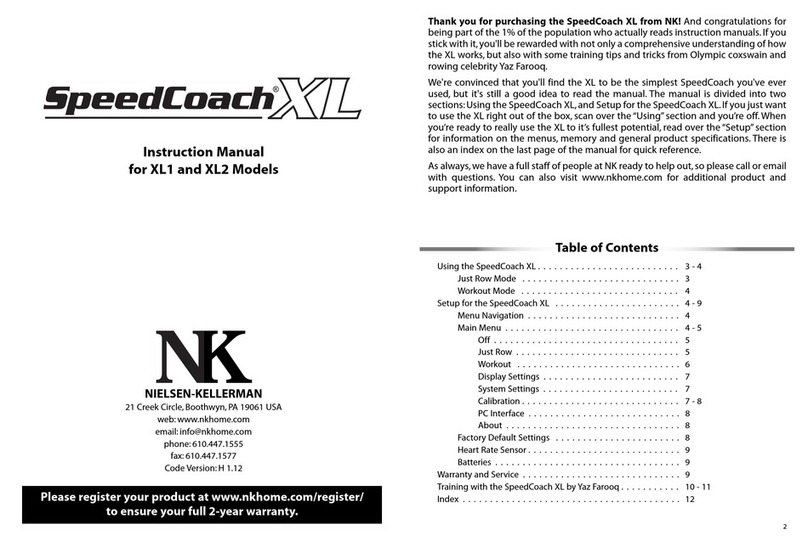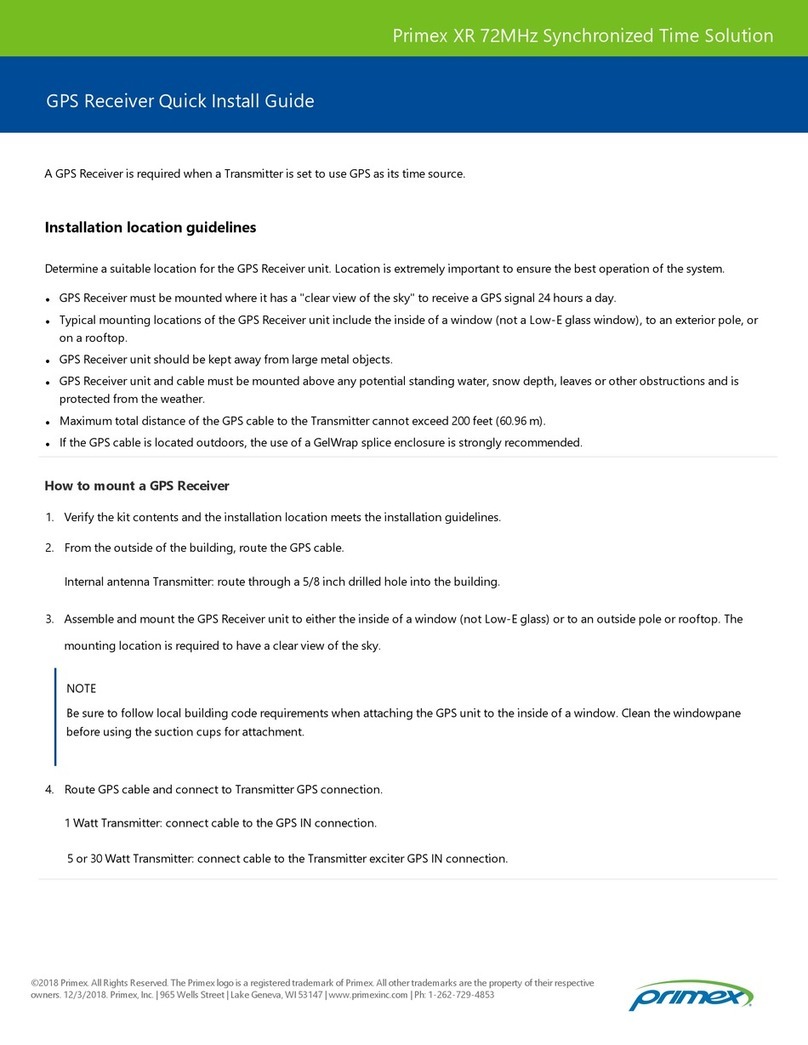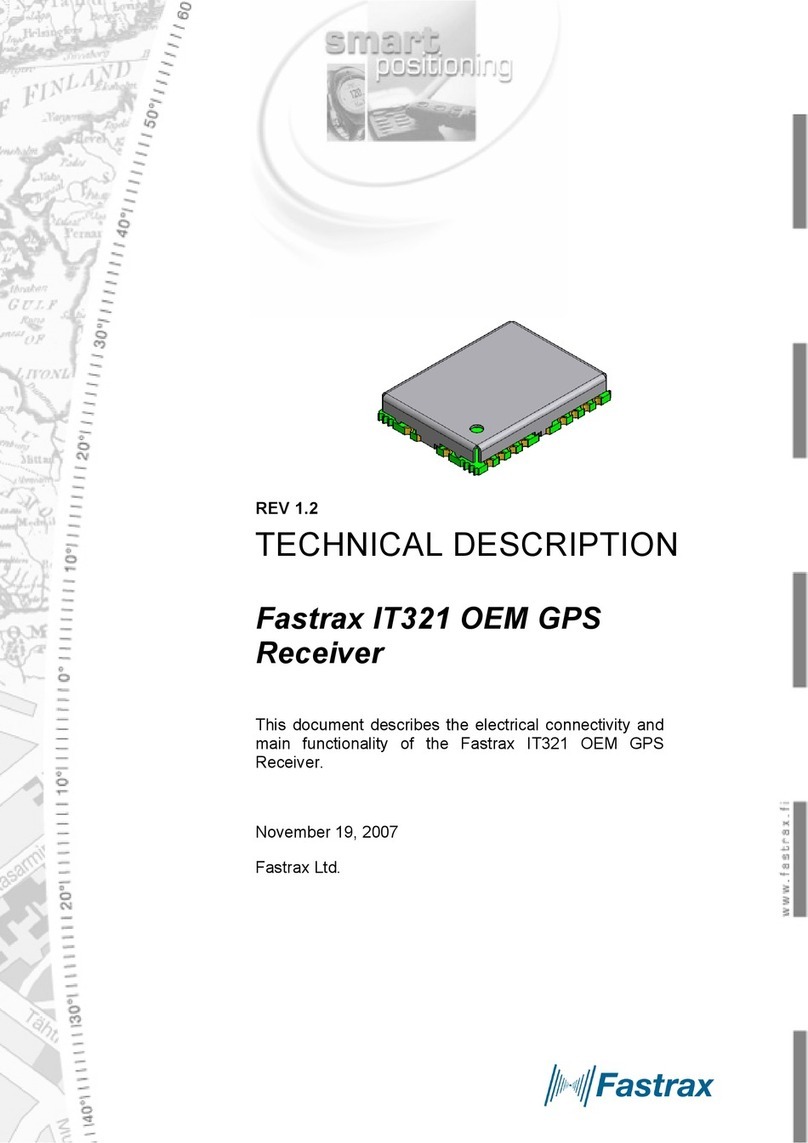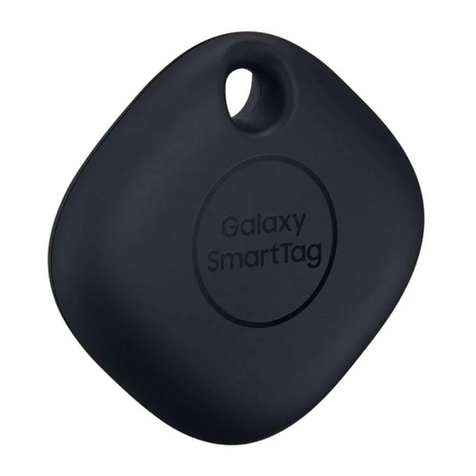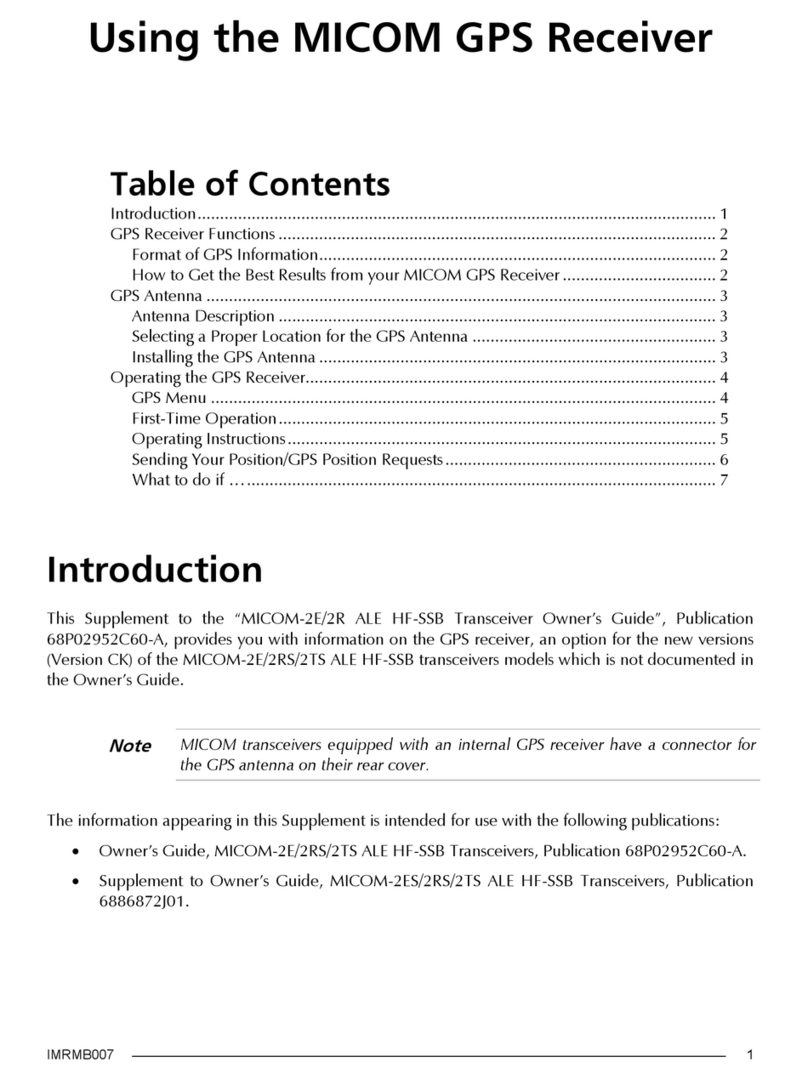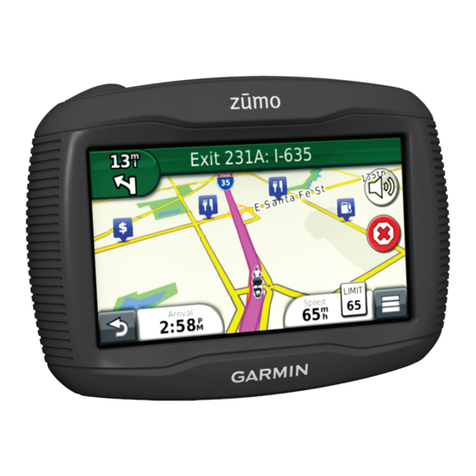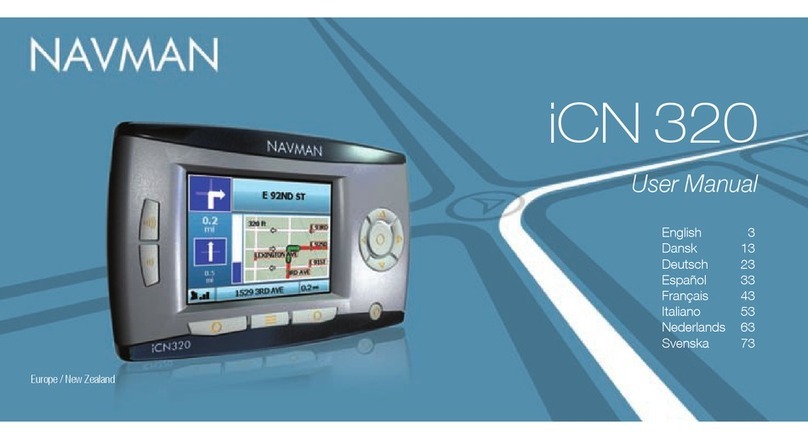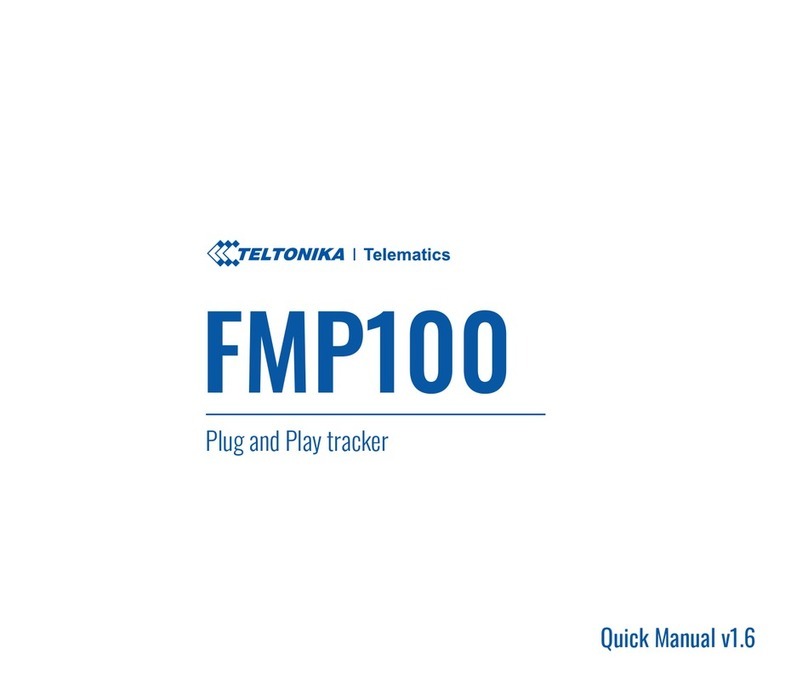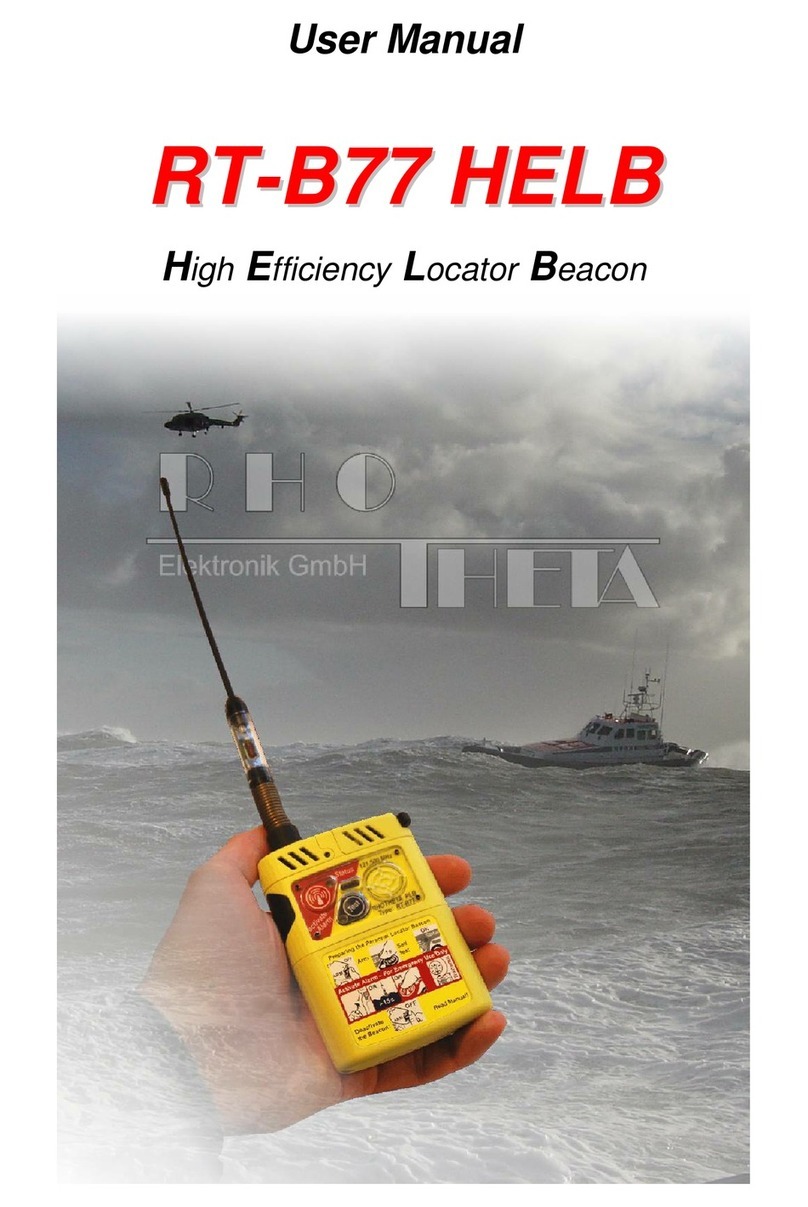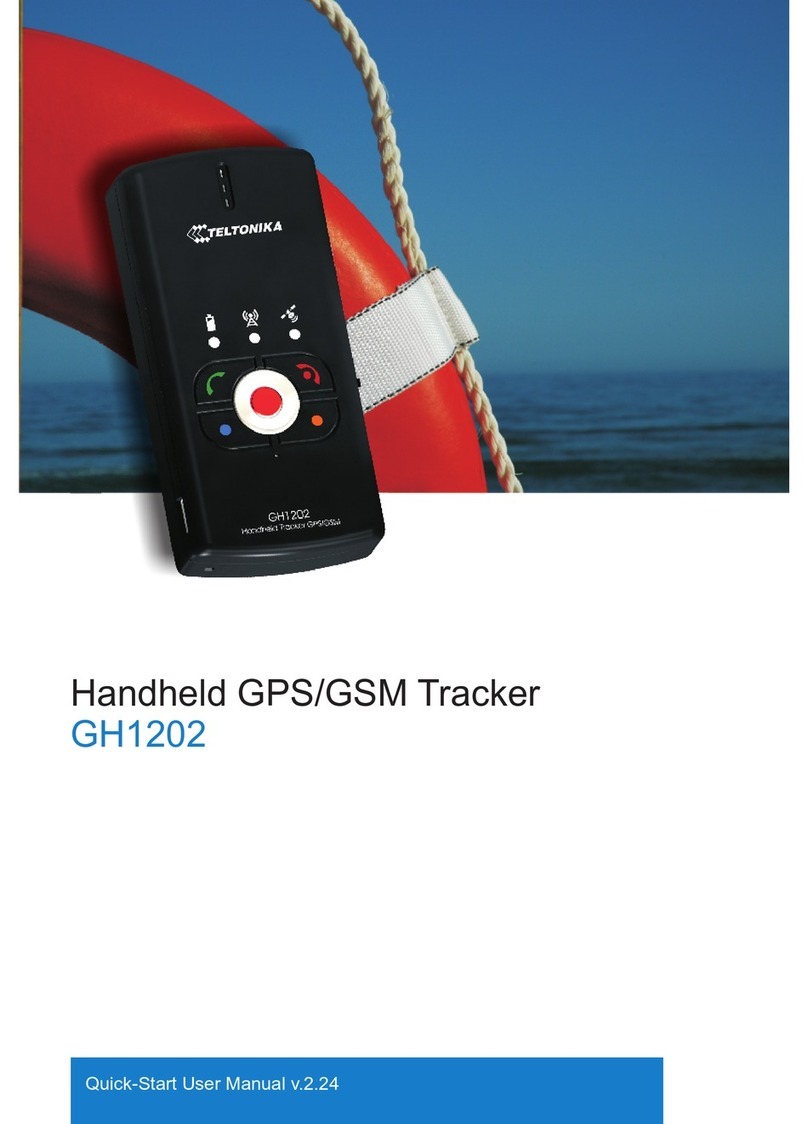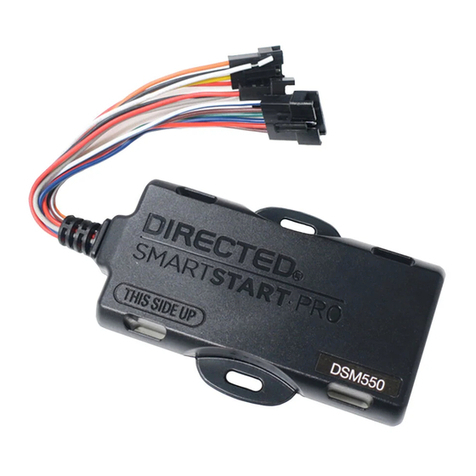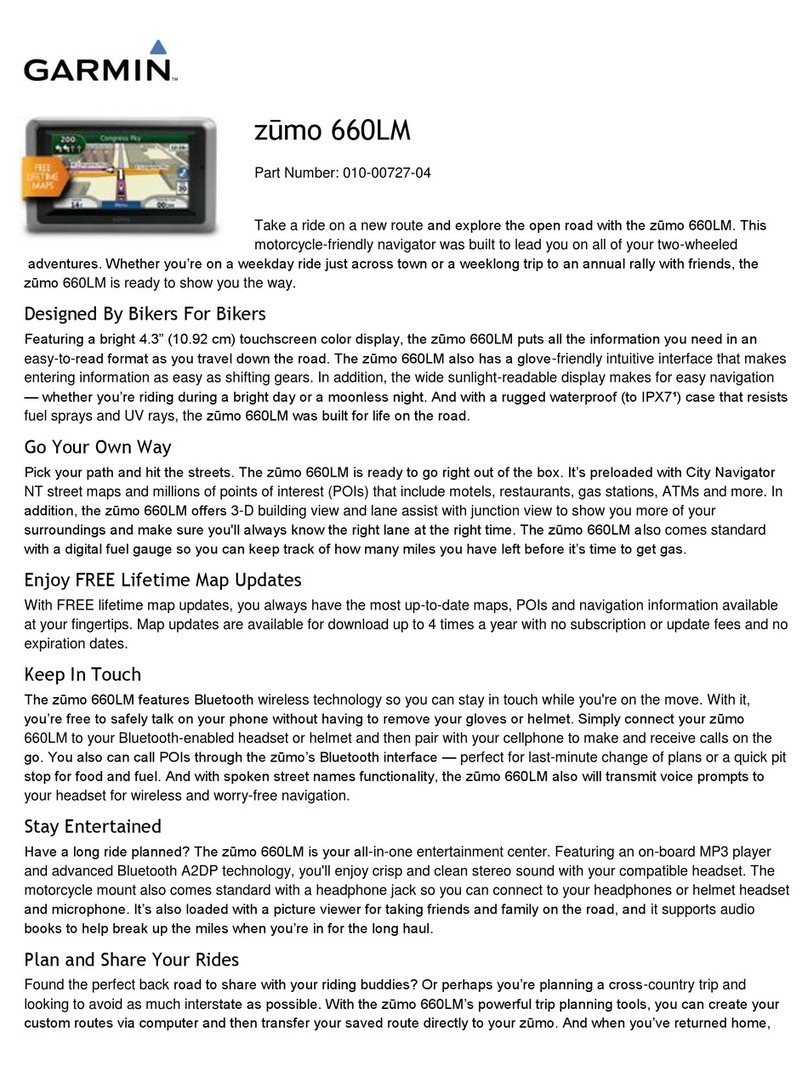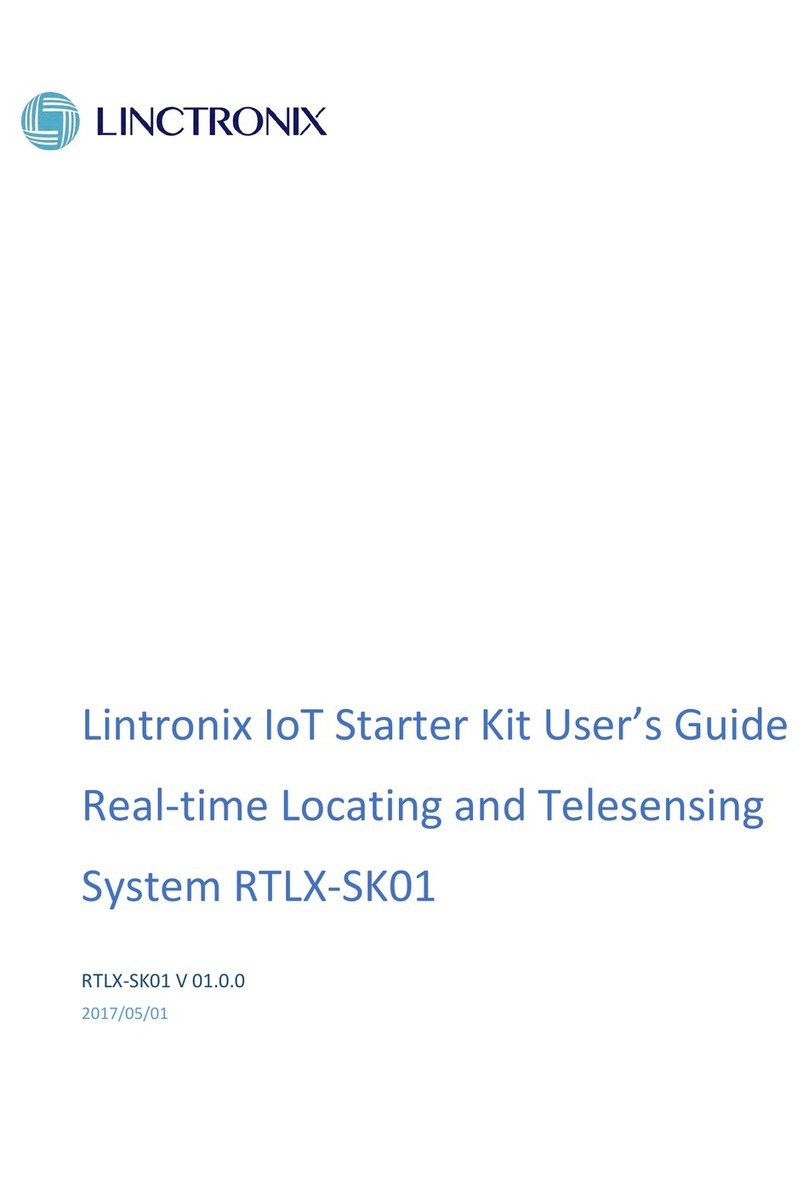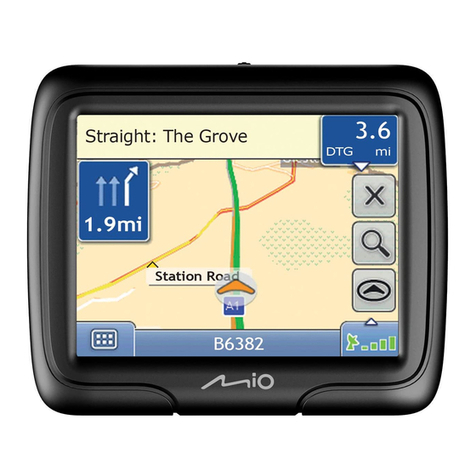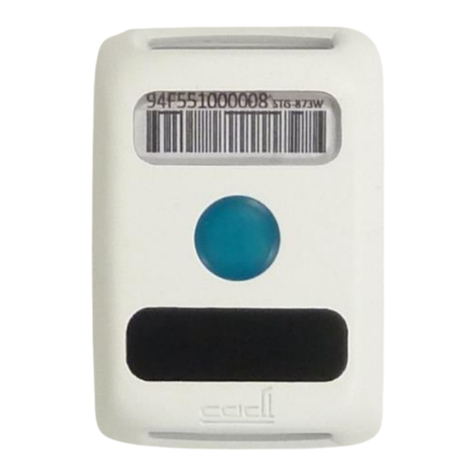Nielsen-Kellerman Kestrel 4100 User manual

NK
NK
Kestrel®4100
Pocket Air Flow Tracker
Instruction Manual
Kestrel® 4100 Pocket Air Flow Tracker
FRONT
2
MANUAL MEMORY BUTTON
Press to manually store current
conditions to memory.
MEASUREMENT BUTTONS
Press to scroll between screens:
Date/Time, Measurements,
User Defined Screens
POWER/SETUP BUTTON
Hold to turn power on or off. Press
to enter and exit Main Setup Menu.
BACKLIGHT BUTTON
Press to activate
backlight
for 1 minute.
COMMAND BUTTON
In Chart Screens, press
to view data points.
In Setup Menus, press
to make selection.
MODE BUTTONS
Press to change mode of
measurements: Current,
Min/Max/Avg, Chart.
BACK
TEMPERATURE SENSOR
Hermetically sealed
precision thermistor.
HUMIDITY SENSOR
Capacitive sensor.
IMPELLER
Sapphire jewel bearings
on a user-replaceable
impeller.
IMPELLER COVER
Swivel cover protects
impeller when not in use.
DATA UPLOAD OPTICAL COUPLER
Software and serial port
interface sold separately.
BATTERY DOOR
Sealed with o-ring to keep
product watertight.
SERIAL NUMBER
2 AAA BATTERIES
3
Kestrel® 4100 Pocket Air Flow Tracker
Getting Started
Pouch and Lanyards 5
Battery Installation 5
On/Off 5
Date and Time Set Up 5
Screen Navigation
Measurements and Modes 6-7
Charts 7
Special Functions
User Screens 8
Min/Max and Averaging 8
Relative Humidity 8
Backlight 9
Air Flow 9
Manual Data Storage 9
Main Setup Menu 10-12
Application Examples 13
Memory Capabilities 14
PC Upload 14
Glossary 15
Factory Default Settings 16
Specifications 17 4
Congratulations on your purchase of the Kestrel 4100 Pocket Air Flow Tracker! The Kestrel 4100 is the next
generation of handheld HVAC instruments. Now, you can instantly measure air velocity, air flow and
environmental conditions easily, accurately, and right in the palm of your hand.
While the Kestrel 4100 is user-friendly and simple to use (and the Quick Start Card will help get you started),
reading the instruction manual is recommended in order to use the Kestrel 4100 to its fullest potential. NK,
manufacturer of Kestrel Pocket Weather Meters, is available to answer questions and provide support. Contact

Pouch and Lanyards
Wrist and neck lanyards and a small pouch have been provided. To install
the lanyard of your choice, feed the thin end of the lanyard around the
metal post on the battery door (as shown in diagram). Feed the thick
end of the lanyard through the loop on the thin end. Using tweezers
can help.
Battery Installation
Use only AAA batteries. Install batteries as indicated on the battery door. After installing the
batteries, the Kestrel 4100 will automatically start in the Date and Time Setting mode. (See Date
and Time Setup below.) Custom settings and chart data will be saved during a battery change.
Turning the Kestrel 4100 ON and OFF
ON: Press the button.
OFF: Hold the button for two seconds. Or, press the button, then press the button with the
word OFF highlighted. (Note: If auto store is enabled, your unit will continue to automatically
store data when the power is turned off.)
Date and Time Setup
The first time that you turn on your Kestrel 4100, as well as after a battery change,
you will need to set the date and time. The Introduction Screen will appear for 3
seconds, followed by the Date/Time Setup Screen. Press the and buttons
to scroll through the settings. Press the and buttons to scroll through the
setting options. After entering the date and time, press the button to exit
the Date/Time Setup. Then press the button again to exit the Main Setup Menu.
5
Modes use
Current Min/Max/Avg Chart
6
The Kestrel 4100 is set up to display 6 Measurements (some are actually
calculations) in 3 Modes.
The Measurements are listed to the right with their corresponding screen
icon. Use the and buttons to scroll through the various Measurements.
The Modes are:
Current - displays the instantaneous reading
Min/Max/Avg - displays the Minimum/Maximum/Average readings from
stored data
Chart - displays a graphical representation of up to 480 stored data points
Examples of each of these screens are shown below. Use the and buttons
to scroll through the various Modes.
In addition to these Measurements and Modes, there are also 3 User Screens, which simulta-
neously show 3 current measurements (see pages 8 and 11 for more information); and the Date
& Time Screen, which gives the current date and time.
Measurements
use
Air Velocity
Air Flow
Temperature
Wind Chill
Humidity
Heat Index
Dew Point
HI
Navigation of Charts
The Kestrel 4000 is capable of storing up to 480 data points. To review
the data, press the button while viewing a chart. A cursor will appear
on the most recent data point. Press the button to scroll through
older data points and the button to scroll through more recent data
points. The date and time at which the data was stored will be displayed
at the bottom of the screen. The data value will be displayed at the top of the screen. Hold down the or
button to scroll quickly through the data points.
Press the or button to review the data for the other measurements. Please note that the cursor will
remain at the same date and time. If new data is stored while viewing chart data, the entire chart will shift left
with the new data point charted on the right. The cursor will not shift with the chart.
Press the button to return to the Chart Mode.
Mode Navigation
While in a Current Screen, press the
button to view the Min/Max/Avg for a
measurement. If there is no stored
data, the values will be displayed as --.-
Press the button again to view a
chart for the measurement. If there is
no stored data, the axis will appear, but
the chart will be blank.
Press the button to return to the Min/Max/Avg and
Current Screens. From either Min/Max/Avg or Chart
Screen, press the or button to scroll through the
Min/Max/Avg or Chart Screen for the other
measurements.
Measurement Navigation
Starting on the Date & Time Screen…
…Press the button to scroll to the
Current Wind Velocity Screen.
Press the button again to scroll to
the Current Air Flow Screen.
Continue pressing the button to scroll through
the Current Measurement Screens, listed on the
previous page, followed by the 3 User Screens. Press
the button to scroll through these screens in
reverse order.
7
Value
Chart
Cursor
Date & Time
8
User Screens
The Kestrel 4100 has three User Screens which can be customized to display three
current measurements simultaneously. (See page 11 for setup instructions.)
Min/Max/Avg for Velocity, Air Flow and Wind Chill
The Min/Max/Avg values for Wind Velocity, Air Flow and Wind Chill are measured independently from the
stored and charted data. While viewing the Min/Max/Avg screen for either Wind Velocity, Air Flow or Wind
Chill, press the button when the screen displays “--average” to begin collecting data for both
measurements. Press the button when the screen displays “--stop” to stop collecting data and hold the
values on the display. Press the button when the screen displays “--clear” to clear the data. This routine will
work simultaneously for all measurements, regardless of which one is displayed while the routine is run. The
Min/Max/Avg for Wind Velocity, Air Flow and Wind Chill will not affect any other Min/Max/Avg or stored data.
Relative Humidity
The Kestrel 4000 is capable of measuring RH very accurately (+/- 3% RH). However, there are a number of
circumstances that can reduce the Kestrel 4000’s ability to perform within these specifications:
• Direct sun will heat the air inside the humidity sensor enclosure and cause inaccurate readings. Keep the
Kestrel 4000 in the shade when taking RH measurements.
• Rapid large temperature changes, such as when taking a Kestrel stored inside at 70°F outside to a
temperature of 40°F, can require as long as 30 minutes to for the temperature inside the RH enclosure to
match the temperature outside, permitting the unit to provide accurate RH readings. Any air flow over the
RH sensor enclosure, even as low as 2 mph, significantly speeds up the response time.
When taking measurements under conditions where there is a significant change in temperature (more
than 2C or 4F) be sure to allow enough time for the RH value to stabilize. The greater the temperature
change, the greater the time. You can use the logging capability of the K4000 to confirm that the unit has
stabilized to a correct reading: Set the memory options to a relatively short logging interval (20 seconds
works well, see page 10 for instructions), select the graphical display of RH, and you can see when the value
is no longer changing significantly. At that point, the RH value is stable and can be relied upon to be within
the accuracy specifications.

You can customize your Kestrel 4100 in multiple ways. Press the button to access the Main Setup Menu.
Press the button to select the highlighted setting.
Off - Press the or the button to turn the display off. Even when the Kestrel’s display is turned off, the unit
will continue to automatically store data if Auto Store is enabled. Wind speed will NOT be stored when the unit is
off.To continously measure wind speed,turn the auto shutdown off (pg.12).The battery life will be decreased if data
is stored frequently. The only way to completely shut off the unit is to remove the batteries. Custom settings
and data will be stored when the batteries are removed.
Memory Options
- These settings control the data storage properties. Press the button to return to the
Main Setup Menu.
Setting Description Operation
Clear Log All stored data is cleared.This will also clear Min/Max/Avg data. Press or to clear the log.
(Go/Done)
Reset MMA All Min/Max/Avg data is cleared.Chart data will remain intact. Press or to clear the MMA.
(Go/Done)
Auto Store When On, data is automatically stored at preset Store Rate. When Press or to toggle
(On/Off ) Off,data is only stored when manually captured with the button. between On and Off.
Store Rate* The frequency at which data sets are automatically stored. Press or to increase or
(2 sec - 12 hr) (Battery life may be shortened if data is stored frequently.) decrease Store Rate frequency.
Overwrite This setting only applies when the data log is full. Press or to toggle
(On/Off ) When On, oldest data point is discarded to allow memory for between On and Off.
the new data point. When Off,new data points are not saved.
Man Store When On, data is stored when the button is pressed. Press or to toggle
(On/Off ) When off, the button is disabled. between On and Off.
* When unit is off, data is NOT stored for 2 sec and 5 sec Store Rates.
9
Backlight
Press the button to activate the backlight. The light will remain activated for one minute. Press the
button within one minute to deactivate the light manually.
Air Flow
The Kestrel 4100 will display the volume air flow, based on the instantaneous air velocity and cross-sectional
area of the opening through which the air is passing. If your particular industry uses a standard of practice
for air flow measurements, be sure to adhere to those standards when using this product.
To set the dimensions of the duct or opening, press the button while viewing the AIR FLOW
screen. The DIMENSIONAL SETTING screen will appear with the word SHAPE highlighted.
The shape of the opening can be selected by pressing the or button. The options are round or rectangular
openings. Press the v button to highlight the dimensional settings. For round openings, simply set the
correct diameter of the opening. Use the and buttons to increase and decrease the value. Holding
these buttons will increase and decrease the value quickly. For rectangular openings, set both the length
and the width of the opening.
When the dimensional settings are correct, press the button to exit the DIMENSIONAL SETTING screen
and return to AIR FLOW screen. The displayed air flow value will be the result of multiplying the instantaneous
air velocity by the area of the programmed opening.
Note that you may change the units for setting duct dimensions under the Main Setup Menu (see page 11
for instructions). Choices are inches, feet, centimeters and meters.
Manual Data Storage
In addition to automatic readings, the Kestrel 4100 can also take readings manually. Simply press the
button to store all the presently measured values in memory with date and time. Readings taken manually
will appear chronologically within the automatically store data in the chart. Manual Data Storage may be
disabled - see page 10 for Manual Data Storage settings.
11
Measurements - Measurement screens can be hidden from the normal measurement navigation. For example,
if wind chill is not of interest, it can be hidden. Press the or button to highlight the desired measurement.
Press the or button to toggle between ON and OFF for each individual measurement. Press the button
to return to the Main Setup Menu.
Graph Scale - These settings control the chart limits of your meter. Depending on the conditions, the lower and
upper limits of the chart scale may need to be adjusted in order to get the best view of the data. Highlight the
desired measurement by pressing the or button. Select the highlighted measurement by pressing the
button. Press the or button to increase or decrease the value of the limits. Press the or button to
change between the upper and lower limits. Press the button to exit and return to the measurement selec-
tion screen. Press the button to return to the Main Setup Menu.
Units - The units of measure can be adjusted to best suit the application. The following units are available:
Air Velocity Air Flow Temperature, Dewpoint, Dimensions
m/s meters per second cfm Wind Chill, Heat Index ft
km/h kilometers per hour m3/h °F Fahrenheit cm
kt knots m3/m °C Celsius m
mph miles per hour m3/s in
fpm feet per minute L/s
Bft Beaufort
Highlight the desired measurement by pressing the or button. Press the or button to scroll through the
available units. Press the button to return to the Main Setup Menu.
User Screens - The three User Screens can be reconfigured to display the most appropriate information for the
application. Only current measurements can be selected for the User Screens - Min/Max/Avg and Charts are not
available.
Highlight the desired User Screen by pressing the or button. Press the button to select the highlighted
User Screen. Press the and buttons to change lines, and the or button to scroll through the available
measurements for each highlighted line. Press the button to return to the User Screen Setup Menu. Repeat
above process for the other User Screens or press the button to return to the Main Setup Menu.
10
12
System - The display Contrast and Auto Shutdown can be reconfigured as desired. The relative humidity and
pressure sensors can also be recalibrated. Press the and buttons to highlight the appropriate selection, and
the or button to adjust or select.
The Contrast can be adjusted for better visibility depending on the ambient lighting conditions. Press the or
button to increase or decrease the contrast from 0 to 20 (0 is lightest, 20 is darkest).
The display can be set to automatically turn off in order to conserve the battery life. Auto Shutdown will only occur
after the preset time has elapsed without any button presses. Press the or button to scroll through the Auto
Shutdown options (15 minutes, 60 minutes, Off).
Humidity Cal - The humidity sensor can be calibrated by “teaching” it the correct humidity. Some special equip-
ment is required for this calibration, including two hermetically sealed containers and saturated salt solutions. NK
offers a calibration kit, and instructions are available on www.nkhome.com. Recalibration of this sensor is typically
not required, and it is not recommended that you recalibrate without speaking to an NK technician.
Press the button to return to the Main Setup Menu.
Date & Time - The date and time,as well as date and time formats,can be adjusted.The Time Formats available are:
12 hour and 24 hour. The Date formats available are day/month/year and month/day/year. (See page 5 for
instructions on how to set the date and time. ) Press the button to return to the Main Setup Menu.
Language - Displayed text can be set in one of five languages:English,French,German,Italian or Spanish. To choose
a language,use the and buttons to highlight the desired language. Press the button to select the language
and return to the Main Setup Menu. Otherwise, press the button to return to the Main Setup Menu without
changing languages.
Restore - Default settings for units of measure, date and time formats, and system settings can be restored. (See
page 17 for a list of the default settings.) Press the or button to highlight the desired default setting: Metric,
Imperial or Defaults. Press the or button to reset the factory setting. Press the to return to the Main Setup
Menu.

The below definitions have been simplified in order to keep this section brief. We strongly
recommend that anyone who wishes to make use of these measurements refer to one of the
many excellent weather references available for a more in-depth definition. On the internet,
visit www.usatoday.com or www.noaa.gov. Or, locate the USA Today publication, The Weather
Book. Please note that any words in a definition printed in italics are themselves defined in this
glossary.
Air Flow: The volume of air passing through an area for a given period of time. This is commonly
calculated by multiplying the air velocity by the cross sectional area through which the air is
passing.
Dewpoint: The temperature to which air must be cooled in order for condensation to occur. The
difference between dewpoint and temperature is referred to as the “temperature/dew point
spread”. A small dewpoint spread indicates high relative humidity, while a high dewpoint spread
indicates dry conditions.
Heat Index: A practical measure of how hot the current combination of relative humidity and
temperature feels to a human body. Higher relative humidity makes it seem hotter because our
ability to cool ourselves by evaporating perspiration is reduced.
Relative Humidity: The amount of water vapor actually in the air divided by the maximum
amount of water vapor the air could hold at that temperature, expressed as a percentage.
Temperature: The ambient air temperature.
Wind Chill: The cooling effect of combined wind and temperature. The wind chill gives a more
accurate reading of how cold it really feels to the human body. The Kestrel 4100’s wind chill is
based on the National Weather Service standards as of November 1, 2001.
14
Store Rate Total Memory
2 sec 8 min, 20 sec
5 sec 20 min, 50 sec
10 sec 41 min, 40 sec
20 sec 1 hr, 13 min, 20 sec
30 sec 2 hr, 5 min
1 min 4 hr, 10 min
2 min 8 hr, 20 min
5 min 20 hr, 50 min
Store Rate Total Memory
10 min 1 day, 17 hr, 40 min
20 min 3 days,11 hr, 20 min
30 min 5 days,5 hr
1 hr 1 wk, 3 days, 10 hr
2 hr 2 wk, 1 day, 20 hr
5 hr 7 wk, 3 days, 2 hr
12 hr 17 wk,6 days
Stored data may be uploaded to a PC with the optional Kestrel PC Interface, NK part number 0830.
13
This section provides examples of applications where a Kestrel 4100 might be used, and the appropirate
memory settings.
HVAC - Environmental Monitoring
Auto Store On Store Rate 5min
Overwrite On Man Store Off
These settings will record conditions every five minutes, for a total storage of almost 21 hours. You can monitor
the conditions in a laboratory or manufacturing plant, both day and night, to determine if the climate control is
working properly. Or you can examine the effect on the environment when employees enter and exit the
building.
HVAC/R - System Function Verification
Auto Store Off Store Rate —
Overwrite Off Man Store On
These settings will require you to press the Manual Store Button in order to store any data at a duct, hood, vent,
or other system location. The meter will not store any data automatically. Be sure to record the location an date/
time of storage for reference when reviewing the data. After storing the conditions at each location, simply
review the data and balance the system.
Air Duct Measurements
There are two useful techniques for measuring air flow in a duct or at the face of a duct opening. First, the
unit can be used in the Max/Avg Mode(see page 8). Hold the unit in one corner or side of the duct. Press the
button to begin the averaging interval. Slowly traverse the duct. Press the button at the end of the
traverse of the duct. The maximum and average air flow measurements will be displayed.
Second, the unit can be used to store the air flow at multiple points in a duct. Hold the unit in one position
in or on the duct. Press the button to manually store the measurements (see page 9). Repeat this process
in multiple positions in or on the duct. When complete, review the stored measurements in the chart data
(see page 7), and average them if desired.
15 16
UNIT METRIC IMPERIAL
Velocity m/s fpm
Air Flow m3/s fpm
Temperature Functions °C °F
Dimensions cm in
Time Format 24 hour 12 hour
Date Format day/month/year month/day/year
SETTING FACTORY DEFAULT
Automatic Data Store On
Data Store Rate 1 hour
Data Overwrite On
Manual Data Store On
User Screen1 velocity, air flow, temperature
User Screen 2 temperature, humidity, dewpoint
User Screen 3 air flow, temperature, humidity
Display Contrast 10
Automatic Shutdown 15 minutes
Language English

Nielsen-Kellerman
610.447.1555
www.nkhome.com
Instruction Manual for Kestrel 4100 version: 4.01 ALL
19
Data Display and
Storage
Minimum, maximum, average and logged history stored and displayed for every
measured value. 480-point data logger with graphical display. Auto data storage; interval
settable from 2 seconds to 12 hours. Manual data ca
p
ture.
Display Digits
Multifunction, multi-digit programmable dot-matrix display.
Display Update
1 second
Display Languages
English, French, German, Italian, Spanish
Display Backlight
Aviation green electroluminescent backlight. Automatic or manual operation.
Operational
Temperature Range
The operational temperature range of the liquid crystal display and batteries is 0° F to
131° F / -18 °C to 55 °C. Beyond the limits of this range, the unit must be maintained
within ran
g
e and ex
p
osed for minimum time necessar
y
to take readin
g
.
Storage Temperature
-22 °F to 140 °F / -30 °C to 60 °C
Auto Shutdown
User-selectable: 15 minutes, 60 minutes or disabled
Batteries
AAA Alkaline, two, included. Average life, 400 hours of use, +/-depending on backlight
use.
Sealing
Waterproof (IP69 standard)
Dimensions
5.0 x 1.8 x 1.1 in / 12.7 x 4.5 x 2.8 cm
Weight
3.6 oz / 102 gm
Color
Safety orange.
18
Measurement Units Operational
Ran
g
eResolution Accuracy
(+/-) Specification Range
Temperature °F -50.0 to 260.0 0.1 1.8 -20 to 158
1 minute °C -45.0 to 125.0 0.1 1 -2 to 70 °C
Relative Humidit
y
%RH 0.0 to 100.0 0.1 3.0 %RH 5 to 95 % non condensin
g
1 minute
Wind Chill °F 0.7 to 135.0 MPH, -
50.0 to 260.0 °F 0.1 1.8 1.8 to 89 MPH, -20 to 158 °F
1 second °C 0.4 to 60.0 m/s, -45.0
to 125.0 °C 0.1 1 0.4 to 40 m/s, -29 to 70 °C
Dewpoint °F 0.0 to 100.0 %RH, -
50.0 to 260.0 °F 0.1 3.6 -20 to 158 °F, 20 to 95% RH
1 minute °C 0.0 to 100.0 %RH, -
45.0 to 125.0 °C 0.1 2 -29 to 70 °C, 20 to 95 %RH
Heat Index °F 0.0 to 100.0 %RH, -
50.0 to 260.0 °F 0.1 3.6 -20 to 158 °F, 20 to 95% RH
1 minute °C 0.0 to 100.0 %RH, -
45.0 to 125.0 °C 0.1 2 -29 to 70 °C, 20 to 95 %RH
Polymer capacitive humidity sensor mounted in thin-walled chamber external to case for rapid, accurate response (US Patent 6,257,074).
Response specification is time to achieve 95% or better of stated accuracy. Calibration drift +/- 2% over 24 months. Relative humidity may
be recalibrated at factory or in field using Kestrel Humidity Calibration Kit, PN-0824.
The above values are calculated from the primary measurements of wind speed, temperature and relative humidity.
Thermally isolated, hermetically sealed, precision thermistor mounted externally (US Patent 5,939,645). Calibration drift negligible.
Measurement Units Operational
Range Resolution Accuracy
(+/-)
Specification
Range
Response Time
Air Velocity MPH 0.8 to 135.0 0.1 0.8 to 89.0 MPH
1 second fpm 59 to 11,948 1 59 to 7877
Knots 0.6 to 118.3 0.1 0.6 to 78
Beaufort 0 to 12 1 0 to 12
m/s 0.4 to 60.0 0.1 0.4 to 40.0 m/s
KPH 1.0 0.1 1.0 to 144
Air Flow cfm 0 to 99,999 1 0 to 99,999
1 second m3/h 0 to 99,999 1 0 to 99,999
m3/m 0 to 99,999 1 0 to 99,999
m3/s 0 to 99,999 0.1 0 to 99,999
L/s 0 to 99,999 1 0 to 99,999
3% of
reading
3% of
reading
1 inch diameter impeller with precision axle and sapphire bearings, individually tested in NIST-traceable wind tunnel. Calibration
drift < 1% after 100 hours use at 16 MPH / 7 m/s. Sustained operation above 60 MPH / 27 m/s will wear impeller rapidly and may
cause destruction of impeller. Replacement impeller, PN-0801, may be field-installed without tools (US Patent 5,783,753).
17
Table of contents
Other Nielsen-Kellerman GPS manuals
